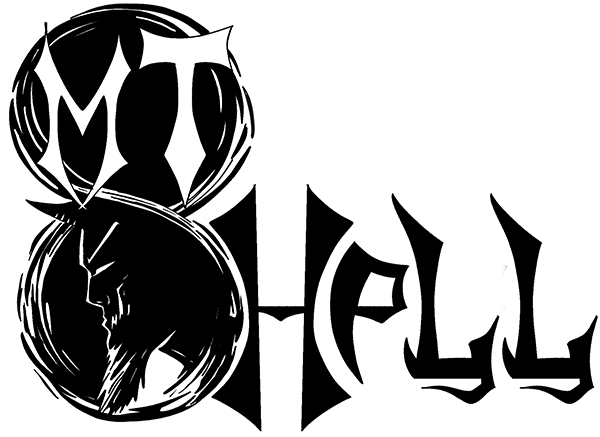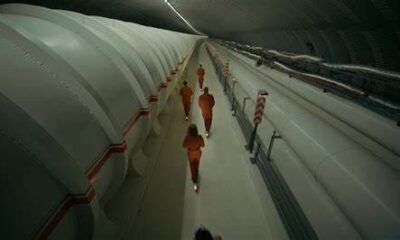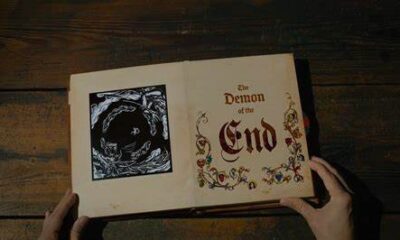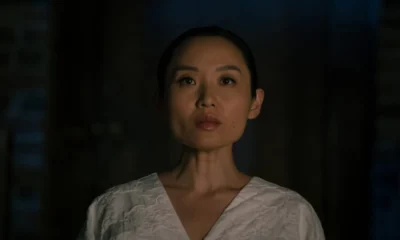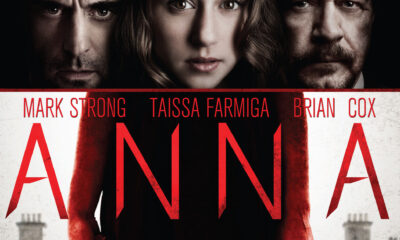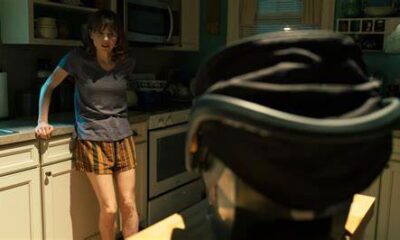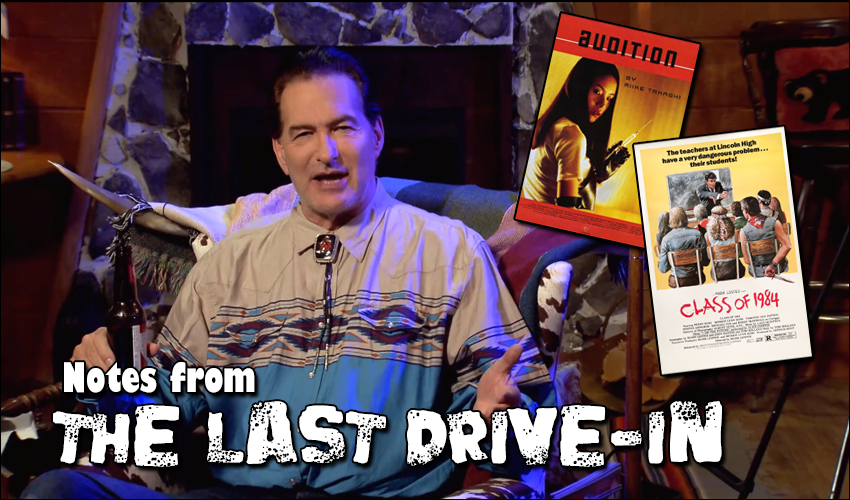
Notes from the Last Drive-In: S3E2 – Audition and Class of 1984
Welcome back to “Notes from the Last Drive-In,” Haunted MTL’s review and recap series for The Last Drive-In with Joe Bob Briggs, a Shudder exclusive. This week, the second episode of season three, Joe Bob sits us down for an Audition, and inducts us into the Class of 1984. How do these movies connect? Who knows? We’ll probably figure out something by the end of our journey together. What a long, strange trip it promises to be.
Audition (1999)
Opening: Dudes, don’t be creepy when trying to meet ladies, Meet Cutes are only in the movies.
Takashi Miike’s Audition, adapted from Ryu Murakami’s 1997 novel, is one of the leading films in what was the 2000s’ wave of J-horror, and stands out, 22-years later, as a horror masterpiece. However, with the film being subtitled, it feels like the movie never quite gets its due for more casual horror viewers. Thankfully, a year after Parasite took home an Oscar for best picture, perhaps a more casual audience’s hearts and minds are more open to world cinema horror. Audition stars Ryo Ishibashi, Jun Kunimura, and Eihi Shiina in a stunning international debut. The film follows a lonely widower, Aoyama, who is convinced to stage a series of phony auditions to find a potential new partner. However, as he sets his sights on a sad, strange woman named Asami, he spirals into obsession and madness… and not necessarily his own.

The film is a stunning exploration of obsessions and gender and cultural norms in Japan that I am not nearly remotely qualified enough to unpack. The film is complex and with every watch I have ever had, my opinions on the two leads change and morph. The film is so subject to interpretation that theories upon theories can be found online making various cases and arguments for just what it all means. Ultimately, the film becomes a personal experience, colored by one’s own history and perceptions. is Aoyama a victim? Yes and no. Did he really experience what he experienced after sleeping with Asami? Who knows? Definitive answers are impossible, and anyone trying to sell you one is just as lost as anyone else.
The film is stunning in a number of areas, particularly in the areas of sight and sound. The film subverts romantic comedy cinematography and uses the camera in several interesting ways to develop an unsettled and uncanny world. What we see through the camera is unreliable, just as the experiences of Aoyama depicted. As his obsession grows more skewed, so too does the reality of the screen heighten. As for the sound, the score is effective, especially as it shifts between romantic themes and the unsettling, but the best work comes in the third act, where every gross, violent image is accompanied with some of the best Foley work I have ever heard. The effect is terrifying.
The performances of the two leads are magnificent, particularly Eihi Shinna as the mysterious Asami, who radiates an unsteady aura. This is helped by the cinematography but even on set, something about her still rattled Takashi Miike. During one of the segments Joe Bob point out that Miike avoided her between takes. Ryo Ishibashi is also fantastic, playing a handsome, vulnerable man who is initially sympathetic until the mask slips with each gradual and sinister allowance. As Joe Bob points out during one of the host segments, the camera focuses on Aoyama most times; Asami’s agency is supplanted by Aoyama’s gaze, a hint at the darker side of the courtship.
The segments surrounding the episode were informative, as expected from The Last Drive-In. Particularly of note were two moments. Before the movie Joe Bob discusses how we classify horror movies. Echoing Supreme Court Justice Potter Stewart from Jacobellis v. Ohio in 1964, an important case on what qualifies as obscene or not, Joe Bob says of horror that “we know it when we see it.” Horror, much like pornography and all good things, is something that can be hard to pin down with words, but is in a state in and of itself. The second segment of note in the first half of the night was an extended gag poking fun at Joe Bob’s inability to pronounce Japanese words, with Joe Bob holding up a series of flashcards and Yuki read the names.
Joe Bob Briggs’ critical of assessment is spot on, giving the film the full four-stars. I am much inclined to agree with the perceived perfection of the film. While few films are perfect to me as I would argue that perfection is something that can be achieved, some get pretty close – Audition is one of those ‘perfect’ horror films and gets a full five-Cthulhu rating.
 (5 / 5)
(5 / 5)
Best Line: “Deeper, deeper, deeper, deeper.” – Asami as she shows how much she really cares for Aoyama.
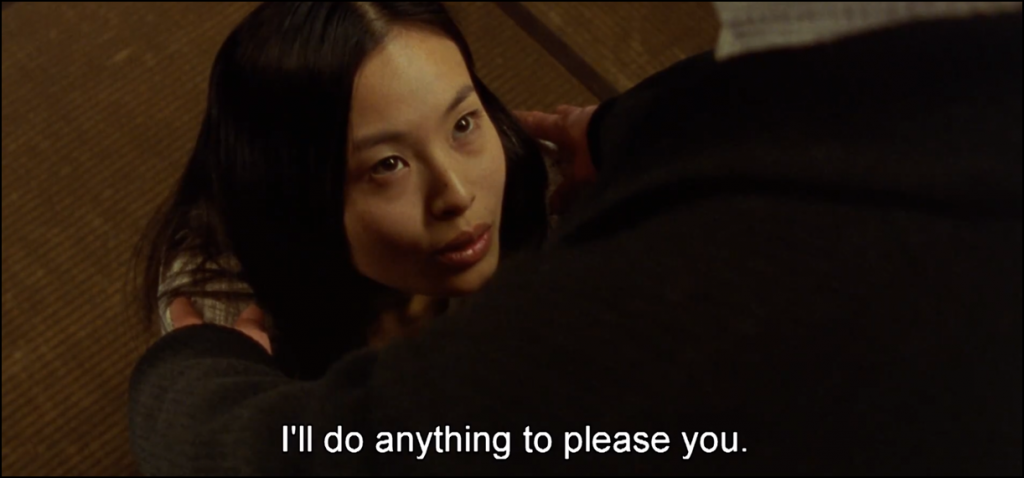
Class of 1984 (1982)
Opening: Corporal Punishment in Teaching (the holes make the paddle faster)
The second half of the night revolved around the 1982 high school crime thriller Class of 1984, directed by Mark Lester. The film is a satirical projection of anxieties regarding violence and crime in schools in the 1980s and would spawn two sci-fi sequels, Class of 1999 and Class of 1999 II: The Substitute. Class of 1984 stars Perry King, Merrie Lynn Ross, Roddy McDowall, and Timothy Van Patten. It also has one of the earliest film appearances of Michael J. Fox with an most unfortunate haircut. The film follows a music teacher, Andrew Norris, who is new to a troubled inner city school that is under the control of a group of “punks” who commit an extremely wide array of crimes. Eventually, Norris finds himself pushed to the extreme and must take action into his own hands to deal with these terror-teens… as violently as possible.
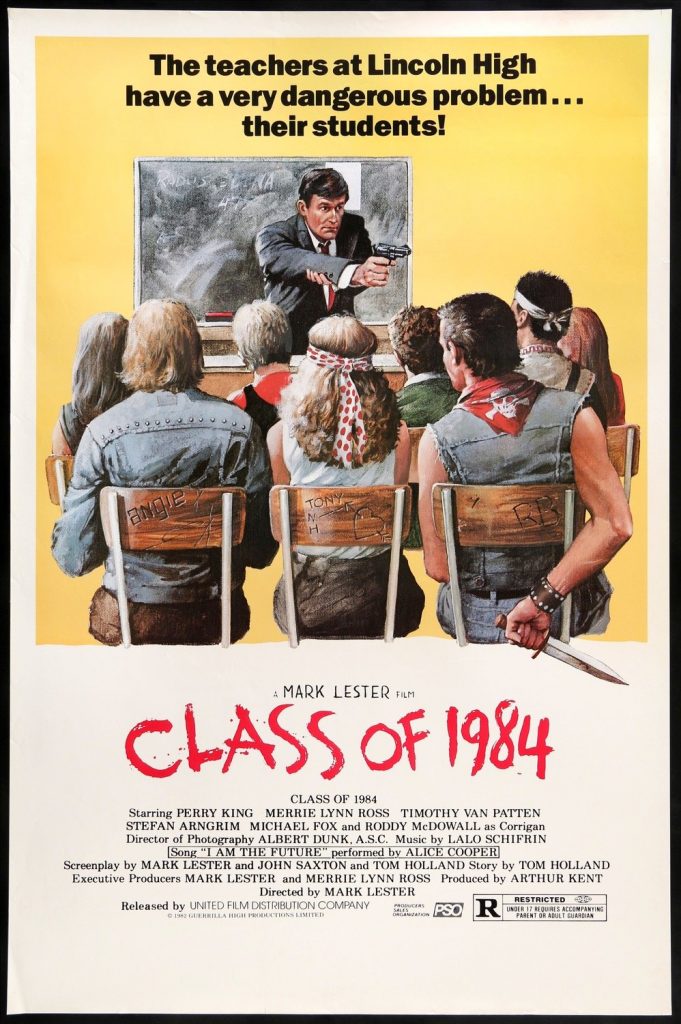
Most films on The Last Drive-In are just good fun for me. I love horror, but despite that, few horror films actually scare me – I walk through haunts laughing. I’ve grown up with the genre, watching violence and terror since I was a toddler. It probably did something to my brain. That being said, no film on The Last Drive-In has affected me quite like Class of 1984. For many, it is not really a horror movie, though, again, I defer to Joe Bob with “we know them when we see them.” The raw, visceral quality of the film, and the inhumanity on display by Tim Van Patten’s Peter Stegman and his merry band of ghouls is profoundly disturbing. I also work as a teacher, so the metaphor of systemic problems in education and the punishment of teachers who try their best to just fucking teach hits hard. Horror is all metaphor; the knife is a phallus, the zombie is a consumer, the chainsaw represents industrialized society – and the inhuman gang of teens of Class of 1984 are among these metaphors. I wouldn’t say that 1984 scared me, though but rather it woke something dark.
The film itself is competent, fun shlock with a lot of missed opportunities. But the key, here, is fun. The set piece in the final act is worth the watch alone. Performances are not subtle, but that’s fine because Roddy McDowall gnashes his way through his scenes, the best of the film, like the legend he was. Tim Van Patten is a cartoonish sociopath, but for a movie like this, it works. Perry King is serviceable, given the thankless role of being the vehicle of vengeance with little realistic development and forced to make dumb choices to move the plot along. His grimace has he murders teens, however? Fantastic.
The movie’s cinematography is pretty unimpressive. It’s competent and gets the job done, but it doesn’t “wow.” The music is better, featuring some solid punk music and a fun theme “I Am the Future” by Alice Cooper. But as a whole, the movie feels like a straight to video project, but lacks a low-budget surge of creativity. It is polished to the point of blandness – its saving grace is the story, some shocking excess, an iconic performance by McDowall, and its connection to Canadian horror.
Joe Bob’s treatment of the movie, I felt, was a little overly effusive. But again, our experience are our own – I do not always agree with his assessments. Three segments during the night were particularly fascinating. One extended segment featured the return of visual aids to a Joe Bob rant, where our venerable host covered the Van Patten family tree to an absurd degree. Absolutely hilarious. Another moment, earlier was a digression on the usage of “punk” in the film. As a fan of punk rock, and someone who is both in love and critical of the scene and its history, it is always a joy to listen to Joe Bob drop some knowledge of the scene. This time around, his focus was on the way punk is portrayed in the movie, and I particularly appreciate his pointing out a distinction between punk and new wave aesthetics. I’d be curious to learn more about his punk music knowledge, personally. The third segment I highlighted, was post-film, where Joe Bob expresses his concerns over how the ending was handled. he was appropriately critical, not disparaging the film, but I think being more honest about it. I would love to have picked his brain there, given his extended criticism, and asked him what his assessment of the film would have been then.
Joe Bob Briggs gave Class of 1984 the third four-star rating of the season. I worry he was a bit too generous. It is a fun movie – and it even got a particularly reaction from me – but it shouldn’t be rated on equal footing with Audition. As for me, the film earns a standard three Cthulhus. it is worth a watch, but temper your expectations.
 (3 / 5)
(3 / 5)
Best Line: “I am the future!” -Peter Stegman, teen of terror
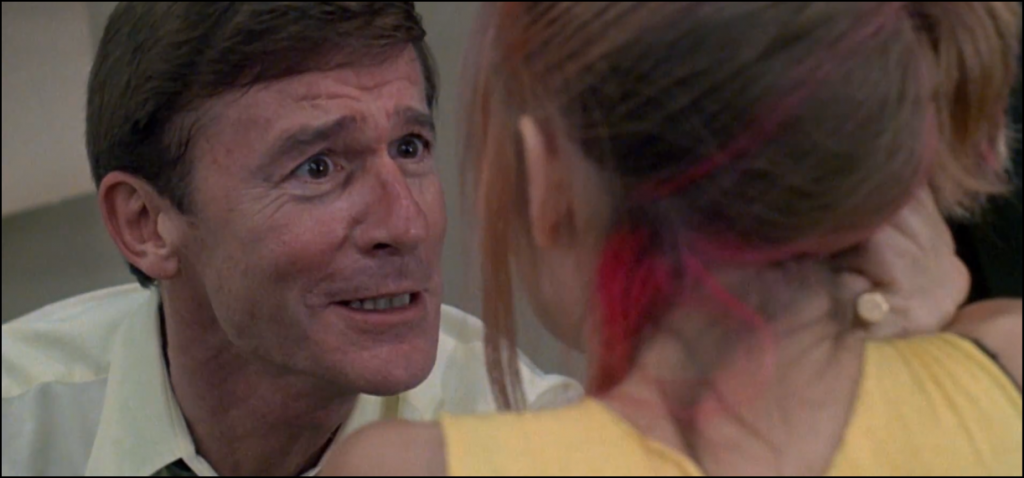
Haunted MTL Drive-In Totals
Our official totals this week, as always, come from the Shudder Twitter account.
As for our totals?
- 3 instance of Four-Star Feature this season
- 2 Instances of “Thee-ate-er”
- 2 instances of Darcy being Twitter Jailed
- 2 Yuki Sightings
- 100+ films by Takashi Miike
- Casting Couch Vibes
- Dead Mom/Wife
- Gratuitous Various Severed Parts
- Acupuncture Fu
- Japanese Pink Film Referencing
- Gratuitous Animal Murder
- Brainfuck Dream Sequence
- Second Polaroid Rape Sequence this season
- Cheese Joking
- Horse Joking
- Silver Bolo Award: Zombie Joe’s Underground
- Darcy Cosplay Count: 2 – Asami and Patsy
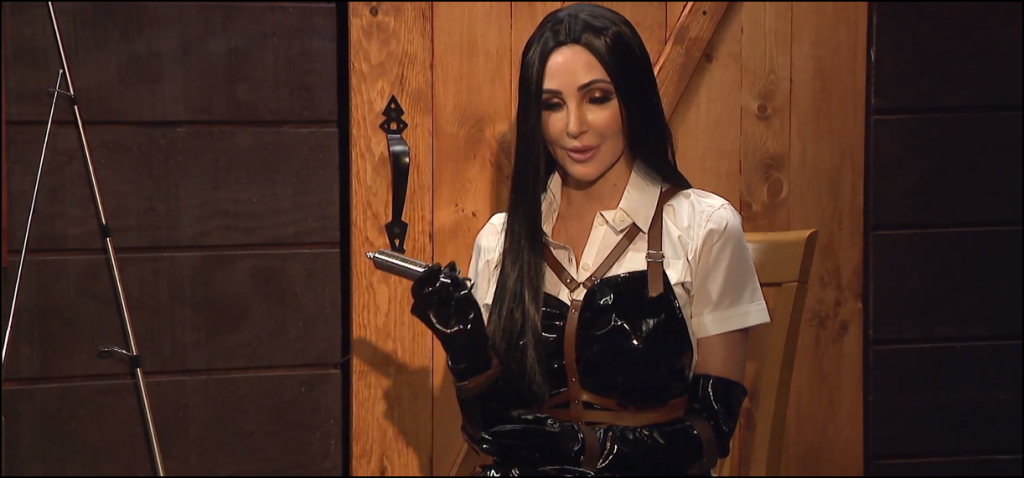
Episode Score
The pairing of films was pretty unusual. I can usually find a way to link the choices thematically, but I admit I am struggling a bit here. If I had to hone in on something, I suppose it would be obsession, as both films feature unhealthy fixations, but it is also a little too easy. The other thought, more abstract, admittedly, is the idea of transitions – moving between states. An audition is a way to force a change from one, high school is a period in which an individual is transitioning from childhood to a perceived adulthood. These transitions, however, are only as good as the intent behind them. Two films depicting two social institutions meant to transition individuals from one stage of life to another, both corrupted. There may be something in that.
 (4 / 5)
(4 / 5)
See you all next week for more Drive-In fun. I’ll be live Tweeting the show from Haunted MTL’s Twitter account, so be sure to give us a follow there.
Movies n TV
Wheel of Time A Question of Crimson Is a Political Espionage Delight
Episode two of Wheel of Time felt like the beginning of a long journey. Stories are unfolding, lives are changing, and blood is spilling.
Let’s discuss.
The story
We begin this episode in the past with Elayne’s mother, Queen Morgase. It turns out her rise to the throne was a bit, shall we say, cutthroat. So when she shows up at the White Tower, Siuan is concerned.
She might have reason to be, too.
Meanwhile, Rand, Egwene, Moiraine, Lan and Aviendha are in the Spine of The World. As they travel through some of the most breathtaking lands I have ever seen on a TV show, Egwene is plagued with nightmares. We think at first that’s just her trauma working itself through her system. But we soon find out that it might not be that straightforward.
Finally, Perrin returns home to heal after his hand is almost cut in half. But when he gets there he finds the town has been infested by Children of The Light. And they’re looking for him.
What worked
There was something heartwarming in this episode about political espionage and choking religious persecution. And that is Elayne’s relationship with her family.
I have consumed a lot of fantasy content with royal families. And I have never once heard a princess call her mother ‘Mum’. I’ve never seen royal siblings get along. And I have sure as hell never seen a princess have a good relationship with her step-parent.
This was refreshing. Even though Queen Morgase is kind of a horrible person she seems like a good mother. And that’s an unexpected delight.
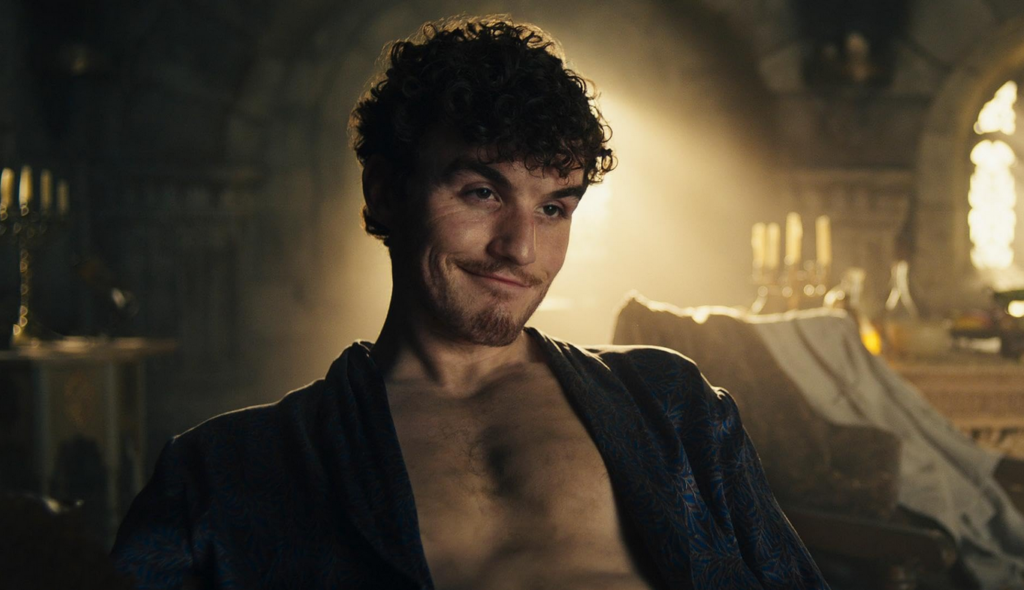
Of course, this is just one storyline among many. And while this can sometimes be overwhelming, in this case it wasn’t.
I’ll be honest, some of these storylines are going to drag for me. I know this because I’ve read some of the Wheel of Time books and I have an idea that not all the characters exactly pique my interest.
No one likes all the characters. No one likes all the storylines. While I am here for the political espionage between Queen Morgase and Siuan, not everyone likes it. While others might be fascinated with Selene trying to win Rand back, I couldn’t care less.
Having multiple storylines keeps everyone’s attention better. So long as things don’t get out of hand. Things can easily get out of hand. But this seems to be managed well.
So far.
What didn’t work
As I mentioned above, I’m not thrilled with Rand’s story at this point. And while it’s fine to not like a storyline when there are this many to choose from, it’s not fantastic that the one I like the least is the one involving our two main characters. And anytime we were with the team at the Spine of The World, the only thing that brought me joy was Moirain’s hat. It reminded me of Stockard Channing’s hat in Practical Magic.
The problem is that Rand is Charlie Brown with controversial magical powers. He is boring, serious, and pessimistic.
And yes, I understand that he has a heavy emotional burden and he’s the Dragon Reborn and that’s quite taxing and all. But let’s be fair, there isn’t a single person in this show that doesn’t have a heavy burden. And most of them manage to be fun occasionally.
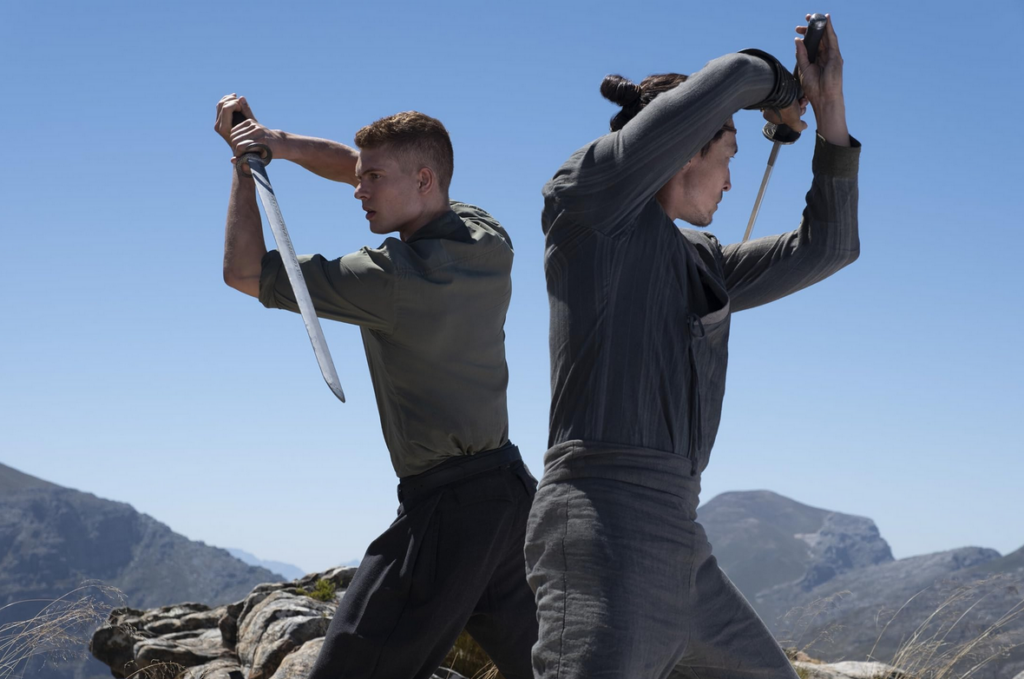
All that being said, this episode of Wheel of Time did exactly what it needed to do. It set up conflicts at each of the three locations. It established emotional ties between the characters and the events. And it established goals for everyone.
This was, in short, a solid episode. Not groundbreaking, not mind-blowing or life changing. It was simply good. It was entertaining and moved the plot forward.
Well done.
 (3.5 / 5)
(3.5 / 5)
Movies n TV
Wheel of Time Returns With A Bang
Wheel of Time is back for season three. There are mixed feelings regarding this. Last season, there were some serious pacing issues. And some serious sticking to the book’s storyline issues. But we’re two seasons in, and we don’t give up so easily. So let’s dive into episode one, To Race the Shadow.
By the way, I highly recommend watching this episode with the subtitles on. You’ll see why.
The story
We begin this episode with Liandrin facing a trial of sorts for her rampant betrayal. She does her best to gaslight her Aes Sedai sisters into thinking that Siuan Sanche is the real traitor.
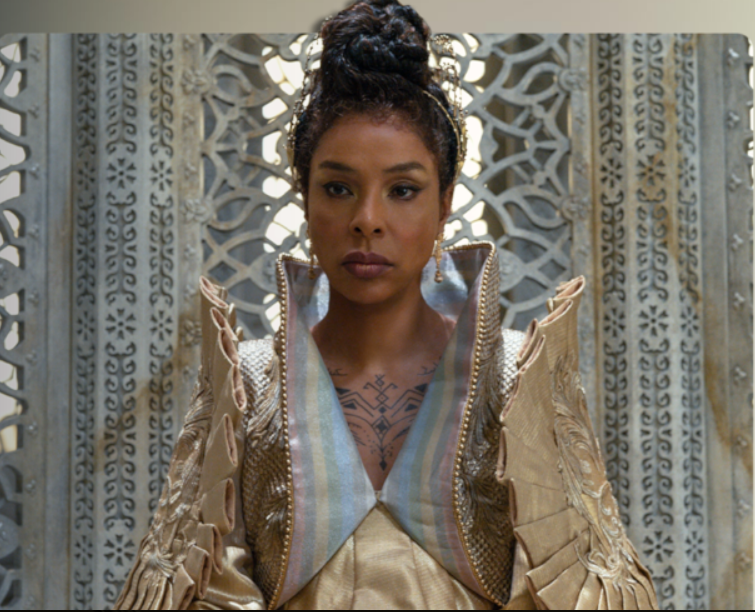
When that doesn’t work, she reveals how many Black Aes Sedai have actually infiltrated the tower.
Spoiler, it’s a lot.
In the aftermath, our whole team gathers to drink and enjoy one night of relaxation before they head out to the Tear to form an army for Rand. All is going well until they’re attacked by myriad creatures and a sentient axe.
What worked
This episode was long. It had a run time of an hour and eleven minutes. And a lot of that run time was spent in heavy dialog scenes.
Fortunately, these were well-done scenes.
If you’re going to have a lot of talking scenes, there are good ways and bad ways to do it. Last season, we saw lots of examples of the bad way to do it. But this episode did it well. For one thing, other things were going on while conversations were taking place. The characters are drinking, playing games, walking through an interesting city. And the scenes themselves didn’t stretch out. They weren’t repetitive. We heard what the character had to say, then we moved on.
It was also nice that the point of these scenes wasn’t just info dumps. We had character development. We had romantic interactions. We had plot development and foreshadowing.
Overall, this episode felt like what it was. A moment of calm before a storm.
Taking a step back, I’d be remiss if I didn’t address the fight scene at the start of the episode. Because it was epic.
The magic looked amazing. The martial arts that went along with it looked fantastic. The costumes were beautiful. It was just incredibly fun to watch.
More than that, it was emotional. We lost some characters in that fight that were important. And it was clearly emotionally shattering for many of our characters, who found themselves betrayed by people they trusted.
So many of them.
It was a great way to open the season.
What didn’t work
Despite that, this episode wasn’t without its flaws.
First off, there were a lot of dialog scenes. And they were good scenes, as I’ve already discussed. But it was one after another after another. And when your episode is, again, an hour and eleven minutes, it’s maybe a little much to have so much chit-chat. Couldn’t some of these conversations, important as they were, have been moved to maybe another episode?
Finally, I want to talk about Egwene’s travel through the arches.
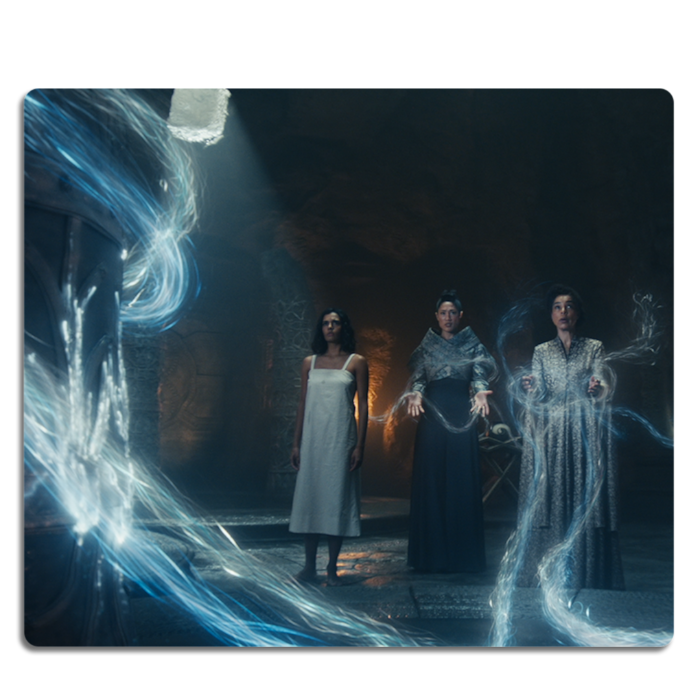
I feel like maybe there were some deleted scenes here. Because there must have been more to that visit than what we saw, right?
We could have seen Egwene battle Rand. That would have been badass and emotionally devastating. We could have seen her with a quiet life with Rand back home at the Two Rivers. We could have seen anything except for the quick clip of Rand in a bloody river, followed by Egwene being shoved back out in a bloody shift.
Bad job. But at least it wasn’t an extended scene of Moiraine collecting bathwater, and then taking a bath while looking sad. If we’d started this season with another scene like that, it might have broken my brain.
Amazon dropped the first three episodes at once. So we’ll be back soon to talk about episode two. See you then.
 (4 / 5)
(4 / 5)
Movies n TV
Entertaining as hell: Eight Legged Freaks (2002) Review
Early 2000s is a special era for the industry. It accepts the cheesiness and corniness of movie making, in turn producing some gems in their own right. Eight Legged Freaks starring David Arquette and young Scarlet Johanson is a horror comedy about giant spiders who overtake a small town. As crazy as that premise sounds, the movie surprisingly has a ton of heart and is super entertaining. Let’s review, shall we?
Plot
We start Eight Legged Freaks with a shot of toxic waste spilling into the water supply of Joshua, a spider farm owner. He is friends with Mike, one of our protagonists, who is a science geek and a spider enthusiast. Mike notices something quite right upon visiting Joshua, but no one takes him seriously. We are then introduced to the rest of the crew. Mike’s mother Samantha, the town sheriff, is too busy chasing Ashley, his sister, who is dating the town mayor’s son Bret (something Samantha does not approve of). We also have Chris, who returns to the town to save his father’s legacy in the town mines. He has opposition from Wade, Bret’s father, who wants to use the mines for his business ventures. Lots of drama going on that will only get juicier once the spiders get loose.
The creepy crawlies quickly dispose of Joshua and make their grand appearance after Ashley rejects Bret’s advances, abandoning him in the middle of a desert. A glorious chase sequence ensues as the spiders make their way towards the town, wreaking havoc on its residents. In a true horror fashion (which the movie acknowledges), it takes some convincing from Mike and then from Samantha for the town to take the threat seriously. The tongue-in-cheek style of narrative adds the comedy aspect to a movie that would otherwise burn out fairly quickly.
The remaining characters hide out in a shopping mall as it’s the only somewhat sturdy building in the area. This doesn’t last long as the spiders break in, forcing them to run through the mines. Their resources to fight the creepy crawlies off are limited as the methane gas doesn’t allow them to use firearms. Such conditions require resourceful thinking from Chris, who uses perfume to fend off the leader of the spider group and save himself during the climax of the movie.
Character dynamics are not forgotten once the action kicks in. We have Chris confessing his long-term feelings for Samantha which she knew all along, which provided some comedic relief. Bret also reunites with Ashley and apologises for being an asshole. Mike finally gets the appreciation he deserves as his knowledge saves the townsfolk more than once during the whole ordeal.
We end the movie with the town’s radio show person telling the story as an urban legend during his segment. This brings it into question – how much of it happened the way he said it did? We can only guess…
Overall thoughts
Eight Legged Freaks is a fun creature feature with some self-aware commentary on genre tropes that doesn’t take itself too seriously. The acting is good, the pacing fitting and the characters are likeable enough for you to want them to make it through. Definitely a must watch, if you don’t suffer from arachnophobia, that is.
 (5 / 5)
(5 / 5)

